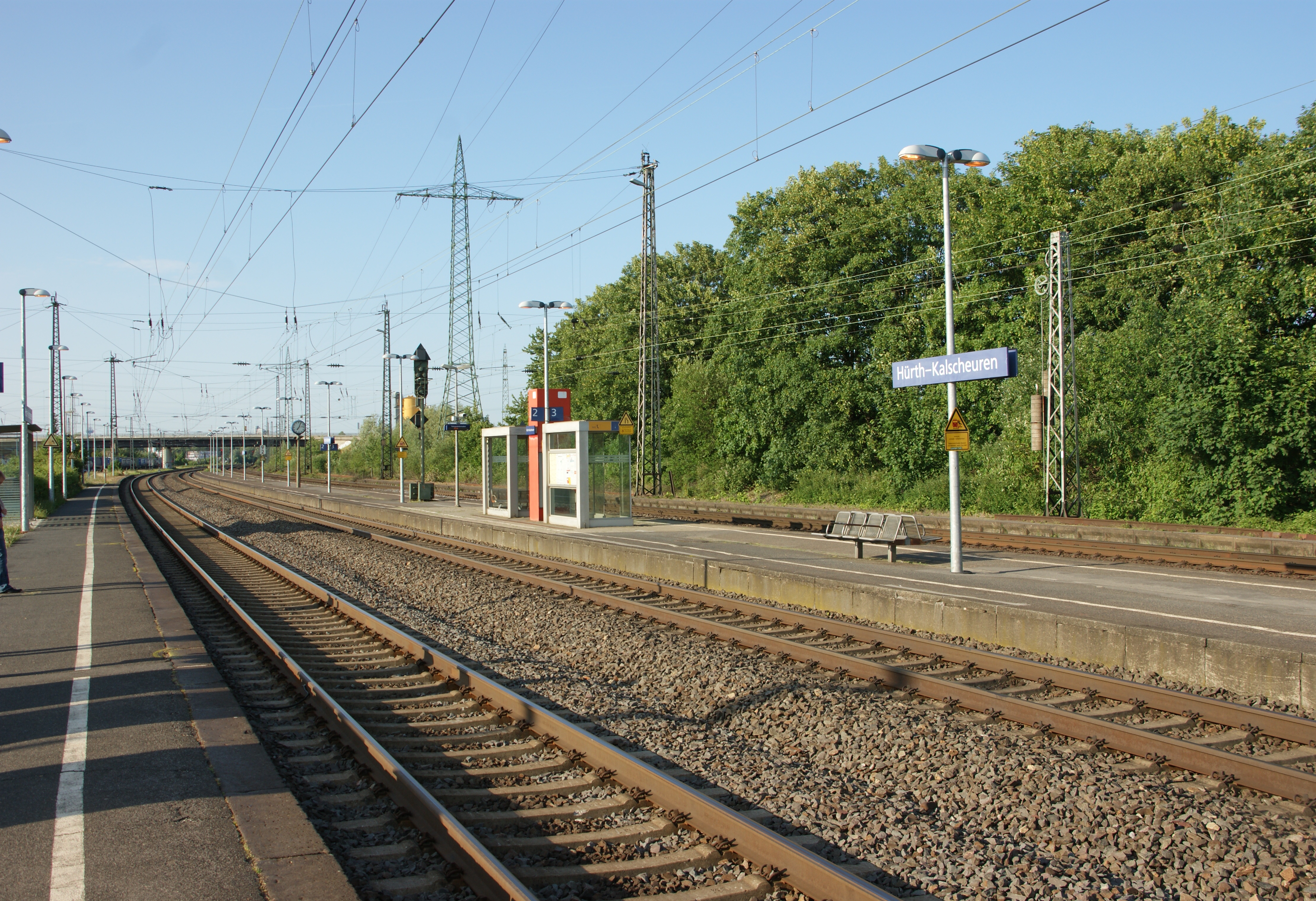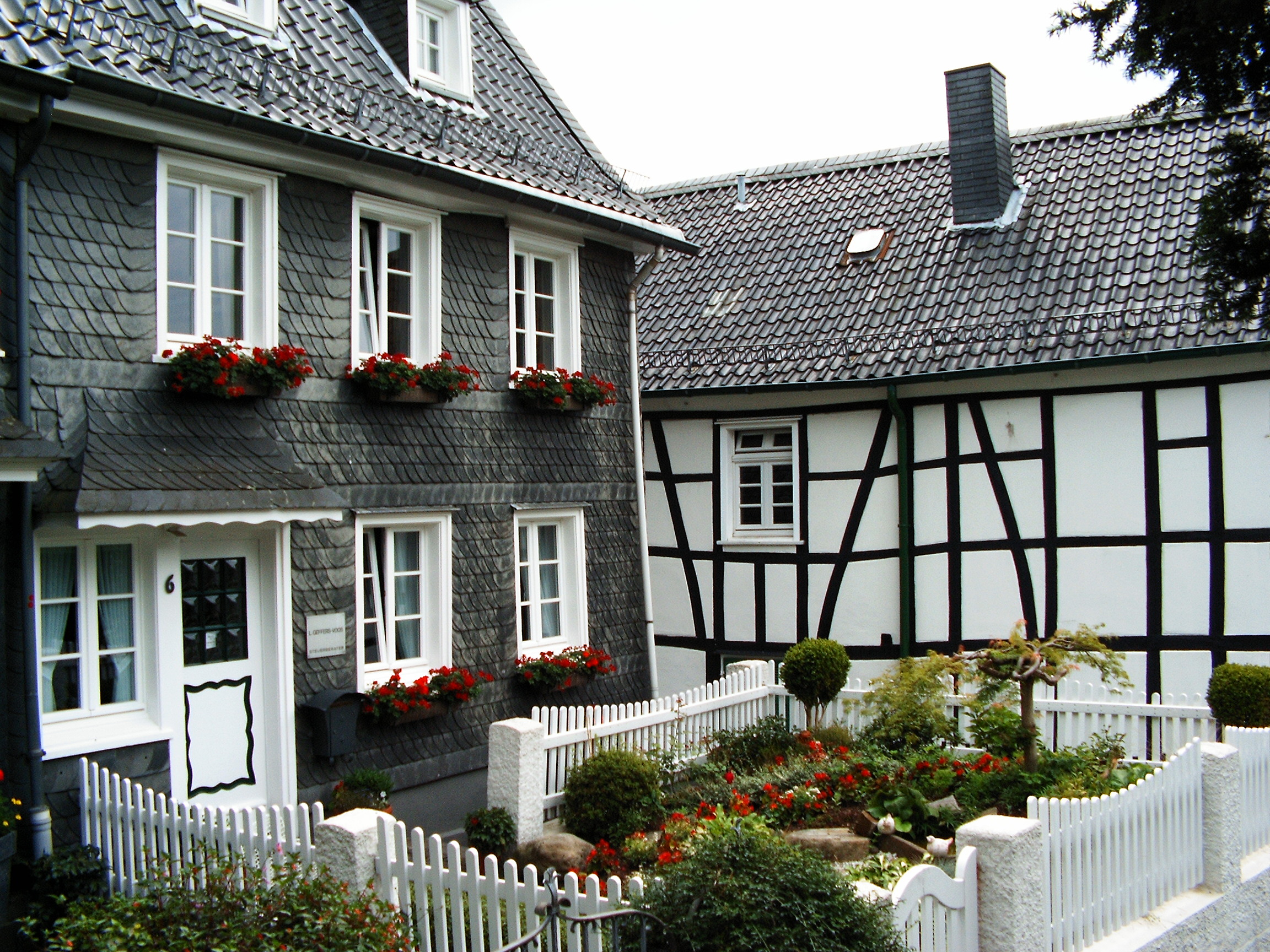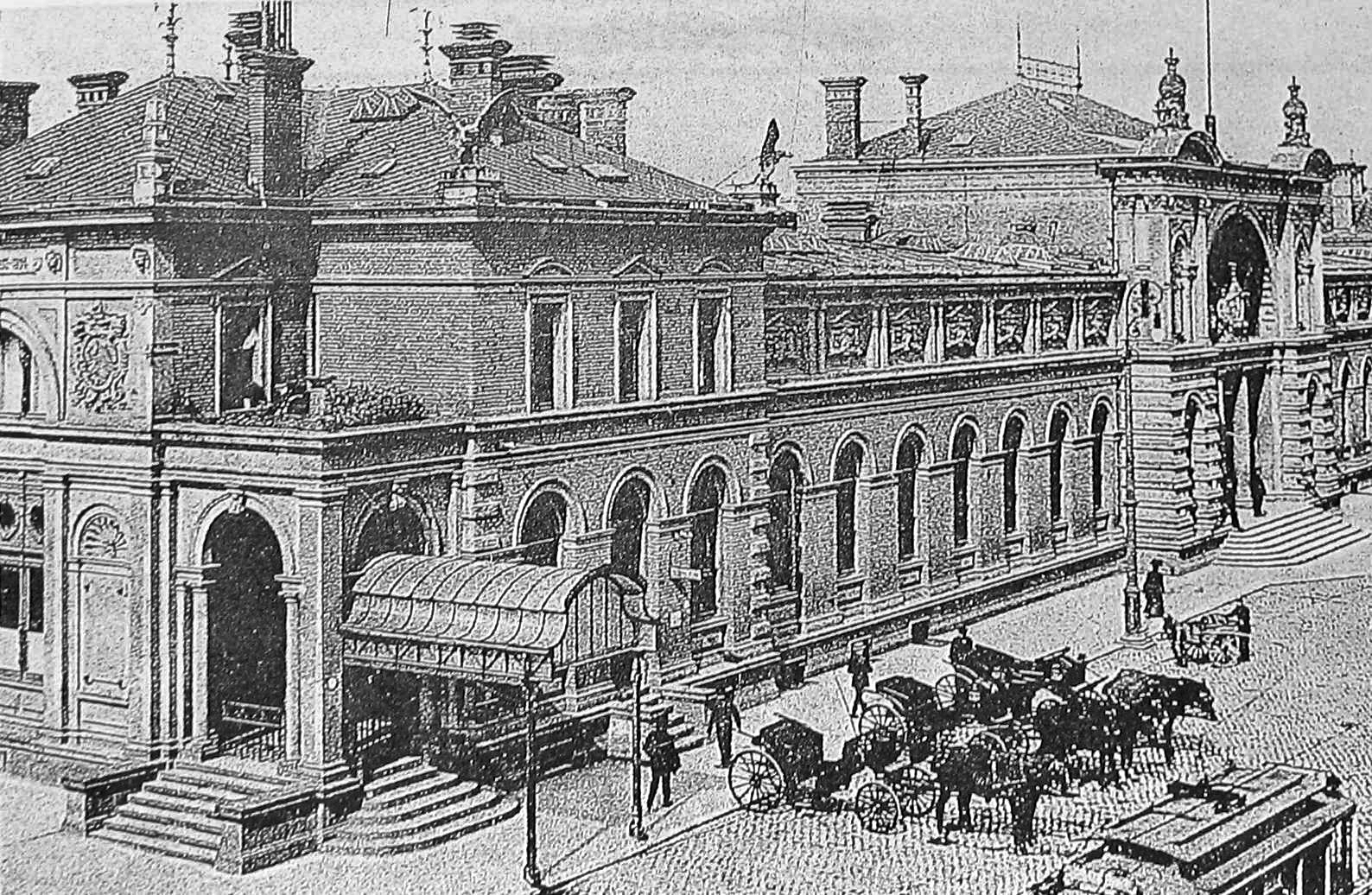|
Rhein-Wupper Bahn
The Rhein-Wupper-Bahn is a Regionalbahn service in the German state of North Rhine-Westphalia. It connects the cities of Wuppertal, Solingen, Leverkusen, Cologne and Bonn and it is operated by National Express. Route The line runs mainly over the tracks of three railway lines: *from Wuppertal Hauptbahnhof to Gruiten station over the Düsseldorf–Elberfeld railway, built from 1838 to 1841 by the Düsseldorf-Elberfeld Railway Company, *from Gruiten to Köln-Mülheim station over the Gruiten–Köln-Deutz railway, opened on 25 September 1867 and 8 April 1868 by the Bergisch-Märkische Railway Company and *from Cologne Hauptbahnhof to Bonn-Mehlem over the West Rhine Railway, opened on 15 February 1844 by the Bonn–Cologne Railway Company and extended to Koblenz on 11 November 1858 by the Rhenish Railway Company. The trains of the Rhein-Wupper-Bahn (RB 48) stop at all stations on the line. They run daily from 5 am to 20 pm at hourly intervals between Wuppertal Hauptbahnhof and ... [...More Info...] [...Related Items...] OR: [Wikipedia] [Google] [Baidu] |
North Rhine-Westphalia
North Rhine-Westphalia (german: Nordrhein-Westfalen, ; li, Noordrien-Wesfale ; nds, Noordrhien-Westfalen; ksh, Noodrhing-Wäßßfaale), commonly shortened to NRW (), is a state (''Land'') in Western Germany. With more than 18 million inhabitants, it is the most populous state of Germany. Apart from the city-states, it is also the most densely populated state in Germany. Covering an area of , it is the fourth-largest German state by size. North Rhine-Westphalia features 30 of the 81 German municipalities with over 100,000 inhabitants, including Cologne (over 1 million), the state capital Düsseldorf, Dortmund and Essen (all about 600,000 inhabitants) and other cities predominantly located in the Rhine-Ruhr metropolitan area, the largest urban area in Germany and the fourth-largest on the European continent. The location of the Rhine-Ruhr at the heart of the European Blue Banana makes it well connected to other major European cities and metropolitan areas like the R ... [...More Info...] [...Related Items...] OR: [Wikipedia] [Google] [Baidu] |
Hürth-Kalscheuren Station
Hürth-Kalscheuren station is in the town of Hürth in the Rhein-Erft district in the German state of North Rhine-Westphalia. It is at the junction of the Eifel Railway with the West Rhine Railway. The station was built in 1859 at the initiative of the city of Hürth, but was renamed ''Hürth-Kalscheuren'' in 1991/2 as a result of a contribution of Deutsche Mark 14,000 from Kalscheuren. Location Hürth-Kalscheuren station is located on the eastern edge of the city of Hürth in the district of Kalscheuren near the local television studios on the border of the city of Cologne. North to the station’s track field is the southern exit from the container terminal of Cologne Eifeltor freight yard. Hürth-Kalscheuren station is served by bus line 714 of Hürth public transport, connecting to the centre of Hürth and the ''Vorgebirgsbahn'' (literally “foothills railway”, now line 18 of the Cologne Stadtbahn) station Hürth-Hermülheim. Meschenich, which belongs to the Rodenkirche ... [...More Info...] [...Related Items...] OR: [Wikipedia] [Google] [Baidu] |
Solingen
Solingen (; li, Solich) is a city in North Rhine-Westphalia, Germany. It is located some 25 km east of Düsseldorf along the northern edge of the region called Bergisches Land, south of the Ruhr area, and, with a 2009 population of 161,366, is after Wuppertal the second-largest city in the Bergisches Land. It is a member of the regional authority of the Rhineland. Solingen is called the "City of Blades", since it has long been renowned for the manufacturing of fine swords, knives, scissors and razors made by famous firms such as WKC, DOVO, Wüsthof, Zwilling J. A. Henckels, Böker, Güde, Hubertus, Diefenthal, Puma, Clauberg, Eickhorn, Linder, Carl Schmidt Sohn, Dreiturm, Herder, and numerous other manufacturers. In medieval times, the swordsmiths of Solingen designed the town's coat of arms, which continues to the present. In the latter part of the 17th century, a group of swordsmiths from Solingen broke their guild oaths by taking their sword-making secrets with them ... [...More Info...] [...Related Items...] OR: [Wikipedia] [Google] [Baidu] |
Wuppertal
Wuppertal (; "''Wupper Dale''") is, with a population of approximately 355,000, the seventh-largest city in North Rhine-Westphalia as well as the 17th-largest city of Germany. It was founded in 1929 by the merger of the cities and towns of Elberfeld, Barmen, Ronsdorf, Cronenberg and Vohwinkel, and was initially "Barmen-Elberfeld" before adopting its present name in 1930. It is regarded as the capital and largest city of the Bergisches Land (historically this was Düsseldorf). The city straddles the densely populated banks of the River Wupper, a tributary of the Rhine called ''Wipper'' in its upper course. Wuppertal is located between the Ruhr ( Essen) to the north, Düsseldorf to the west, and Cologne to the southwest, and over time has grown together with Solingen, Remscheid and Hagen. The stretching of the city in a long band along the narrow Wupper Valley leads to a spatial impression of Wuppertal being larger than it actually is. The city is known for its ... [...More Info...] [...Related Items...] OR: [Wikipedia] [Google] [Baidu] |
Remagen Station
Remagen station is on the Left Rhine line (german: Linke Rheinstrecke) in the city of Remagen in the German state of Rhineland-Palatinate. It is classified by Deutsche Bahn as a category 4 station. The station is served by regular regional services as well as Intercity and EuroCity services. It is also the starting point of the Ahr Valley Railway (''Ahrtalbahn''). History The Left Rhine line from Cologne to Bonn was extended to Rolandseck in 1856 and through Remagen to Koblenz in 1858. The Remagen station building was built in 1860. It has been the beginning and end of the Ahr Valley Railway since 17 September 1880. The station was rehabilitated in the 1930s. Further renovation work was carried out in 2007 and 2008. It has been served by the private railway company trans regio since 14 December 2008. Structure Remagen station has an entrance building, in which a DB ticket office and ticket machines are located. There are food vending machines on platform tracks 2 and 3 an ... [...More Info...] [...Related Items...] OR: [Wikipedia] [Google] [Baidu] |
Rolandseck Station
Rolandseck station in Rolandseck near Remagen, Germany, built from 1856 to 1858, is considered an important part of the cultural heritage of the Rhineland and a significant early Germany railway building. It is the northernmost railway station on the West Rhine Railway in Rhineland-Palatinate. History The Bonn–Cologne Railway Company (') extended its line (later the West Rhine railway) from Cologne to Bonn on 15 February 1844. In 1846, the company had requested permission from the Prussian government to extend the line to Rolandseck, but had been refused for military reasons. Finally in 1853, the Prussian Cabinet gave it provisional permission to extend the line as far as Rolandseck. The new terminus should have been as close as possible to the Rhine, in order to cater for comfortable transfers to steam ships. The supervising engineer for the building of the railway line also produced the sketches for the Rolandseck station, which was set out in such a way that the terminus ... [...More Info...] [...Related Items...] OR: [Wikipedia] [Google] [Baidu] |
Rhineland-Palatinate
Rhineland-Palatinate ( , ; german: link=no, Rheinland-Pfalz ; lb, Rheinland-Pfalz ; pfl, Rhoilond-Palz) is a western state of Germany. It covers and has about 4.05 million residents. It is the ninth largest and sixth most populous of the sixteen states. Mainz is the capital and largest city. Other cities are Ludwigshafen am Rhein, Koblenz, Trier, Kaiserslautern, Worms and Neuwied. It is bordered by North Rhine-Westphalia, Saarland, Baden-Württemberg and Hesse and by the countries France, Luxembourg and Belgium. Rhineland-Palatinate was established in 1946 after World War II, from parts of the former states of Prussia (part of its Rhineland and Nassau provinces), Hesse ( Rhenish Hesse) and Bavaria (its former outlying Palatinate kreis or district), by the French military administration in Allied-occupied Germany. Rhineland-Palatinate became part of the Federal Republic of Germany in 1949 and shared the country's only border with the Saar Protectorate until the l ... [...More Info...] [...Related Items...] OR: [Wikipedia] [Google] [Baidu] |
Bonn-Mehlem Station
Bonn-Mehlem station is a through station in the Bonn district of Lannesdorf in the German state of North Rhine-Westphalia. It has three platform tracks and is located on the Left Rhine line south of Bonn Hauptbahnhof. The station also is served by buses and has parking spaces. It is classified by Deutsche Bahn as a category 4 station. History On 21 January 1856, the section of the Left Rhine line between Bonn and Rolandseck was opened to traffic. The station in the then independent city of Mehlem was opened at this time. Due to the incorporation of Bad Godesberg in the city of Bonn, Mehlem station was renamed Bonn Mehlem in 1971. Mehlem had been part of Bad Godesberg since 1935. A slightly recessed platform in the station served from 1949 as the location for travel and receptions of the American High Commissioner John J. McCloy and his successors to 1955 and the subsequent U.S. ambassadors. A class VT 06 railbus was continuously stationed here for this service. After 19 ... [...More Info...] [...Related Items...] OR: [Wikipedia] [Google] [Baidu] |
Bonn-Bad Godesberg Station
Bonn-Bad Godesberg station is on the Left Rhine line (german: Linke Rheinstrecke) in the Bonn district of Bad Godesberg in the German state of North Rhine-Westphalia. It is a four-track through station, which does not have a “home” platform attached to the station building. Instead, it has two through and overtaking tracks on two island platforms, with one platform numbered 1 and 4 and the other 2 and 3, which is unusual in Germany, but occurs several times on the Left Rhine line. History The station was inaugurated on 15 October 1855 as part of the extension of the Left Rhine line from Bonn to Rolandseck station. The need for Godesberg station, which was then in open fields, was said to stem from the fact that Godesberg was the location of the summer homes of many shareholders of the Bonn–Cologne Railway Company and the president of the Rhenish Railway Company. For years the shareholders had a table in the station buffet and insisted on almost all trains stopping in Gode ... [...More Info...] [...Related Items...] OR: [Wikipedia] [Google] [Baidu] |
Bonn UN Campus Station
Bonn UN Campus station (german: Haltepunkt Bonn UN Campus) is a railway station in the town of Bonn, North Rhine-Westphalia, Germany. The station lies on the West Rhine Railway. Its name is derived from the UN Campus, Bonn. Location The station is located on the border between the districts ''Gronau'' and ''Kessenich'' on the Left Rhine line between Bonn Hauptbahnhof and Bonn-Bad Godesberg. The aim of the construction project was the better connection to the northern part of the federal district. It was implemented at ''Genscherallee'', not far from the Kunst- und Ausstellungshalle der Bundesrepublik Deutschland, Kunstmuseum Bonn and the headquarters of Deutsche Telekom and Deutsche Post. The name ''UN Campus'' refers to the center of the 19 United Nations organizations based in Bonn and is one of the city's biggest focal points of employment. However, the station will not only prove beneficial for visitors to UN organizations, but also for commuters from other companies such a ... [...More Info...] [...Related Items...] OR: [Wikipedia] [Google] [Baidu] |
Bonn Hauptbahnhof
Bonn Hauptbahnhof is a railway station located on the left bank of the Rhine along the Cologne–Mainz line. It is the principal station serving the city of Bonn. In addition to extensive rail service from Deutsche Bahn it acts as a hub for local bus, tram, and Stadtbahn services. History The first station was constructed in 1844 by the Bonn-Cologne Railway Company, as part of the West Rhine Railway. The current building was erected between 1883 and 1884. From 1870 a train ferry connected Bonn station to the East Rhine Railway. With the opening of the Voreifel Railway to Euskirchen, the station became a rail junction. In 1883 and 1884, a new station building was erected, which is now heritage listed. The station sharply increased in importance in 1949, when Bonn became capital of the Federal Republic. Many politicians and federal employees travelled by train, as did guests of the state. In 1969, Bonn grew considerably by incorporating towns which includes the stations ... [...More Info...] [...Related Items...] OR: [Wikipedia] [Google] [Baidu] |

.jpg)







